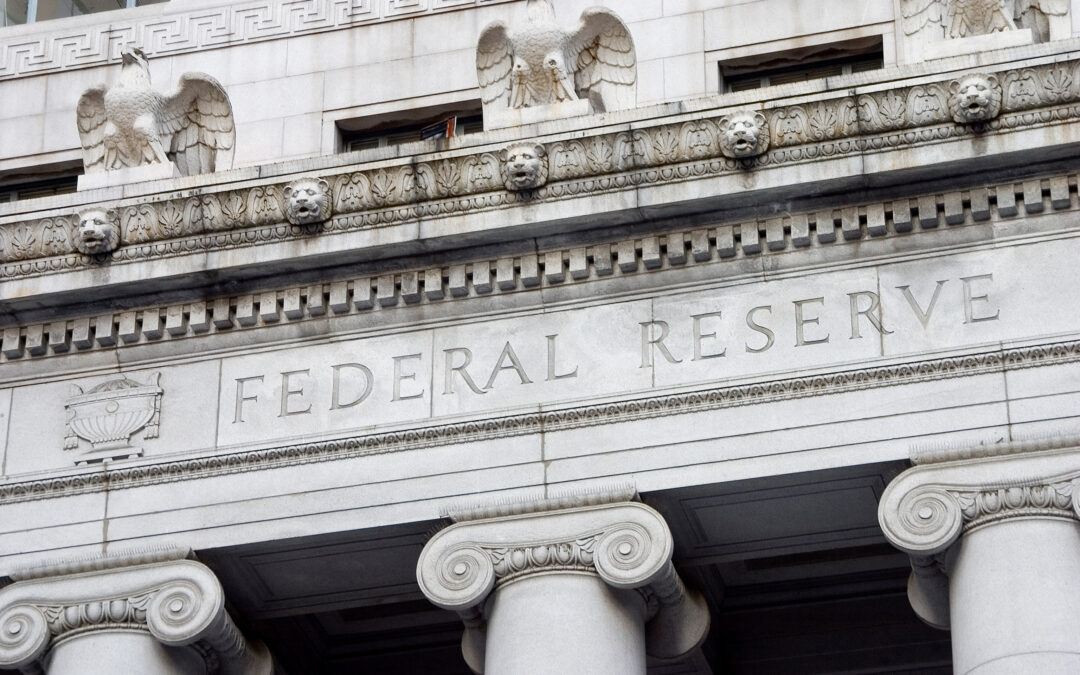The Federal Open Market Committee (FOMC) met this week and voted to cut rates by a half-percent, bringing its policy range to 4.75 percent to 5 percent. This decision comes after committee members had elected to hold rates steady at the preceding eight meetings after their hiking cycle concluded in July 2023. This vote also marks the first time in recent periods that a voting committee member dissented from the popular vote. We saw 11 committee members vote in favor of the action, with Fed Governor Michelle Bowman as the sole dissenter, preferring a quarter-percent cut.
While it seems fitting that rates are beginning to fall within days of the Autumnal Equinox, I doubt Fed officials were aiming for the play on words. So, what were they paying attention to as they made this most recent decision, and what should we keep our eyes on as the seasons change?
Follow the Trends
August’s Consumer Price Index (CPI) data was released last week and showed headline inflation has come down to 2.5 percent year-over-year. This is a far cry from mid-2022 when that number peaked around 9 percent, and it is a testament to the progress made in the fight against rising prices. Fed Chair Jerome Powell and his colleagues have been waiting for more consistent and convincing evidence that inflation is coming down sustainably, and the data in recent periods has provided that confidence boost.
The labor market is the other largest consideration, and recent data points to deteriorating employment conditions. This is likely what persuaded the committee to start with an outsized cut of a half-percent. To be clear, the labor market remains in a solid position for now, but signs of softening have led to concerns about what could lie ahead. While the unemployment rate remains low by historical standards at 4.2 percent, it is following an upward trend. At the same time, the pace of new job creation is slowing. The August reading of changes in non-farm payrolls showed an increase from July, but the larger trend of falling job creation remains intact. This combination of stalling job creation and an increasing unemployment rate could spell potential trouble if the trends persist.
Although inflation remains above the Fed’s 2 percent target and the employment picture remains healthy as it stands, it is important to remember that monetary policy impacts the economy with a lag. With that in mind, it makes sense that Fed officials want to act now as they continue to aim for a soft landing where inflation reaches reasonable levels while avoiding a recession. This is just the start of the Fed’s cutting cycle, so where do we go from here?
Is the First Cut the Deepest?
While a half-percent cut is larger than the quarter-percent many economists anticipated leading up to the meeting, it is still relatively small compared to the increases of 5.25 percent the Fed enacted between March 2022 and July 2023. Rather, the change in direction and expectations for what’s to come will move the needle. An updated Summary of Economic Projections was produced through this meeting and pointed to committee expectations for 50 basis points of additional cuts in 2024 and 100 basis points (1 percent) of cuts throughout 2025. If realized, that would bring us to a full 2 percent of cumulative cuts by the end of next year. There is plenty of room for these expectations to change over time, so what will dictate the speed and magnitude of additional rate cuts from here?
Look no further than what was discussed in the prior section. Inflation readings and the labor market will continue to be the primary areas influencing monetary policy decisions. With inflation near the Fed’s target, employment is coming more into focus as the main driver behind how much and how quickly rates will come down. The goal is to orchestrate a soft landing, and employment must remain decently strong for that to happen. Should monthly changes in non-farm payrolls continue to fall or even reach negative territory, that could surely prompt a quicker pace of rate cuts. But if those numbers hold up, the Fed may opt for a slow and steady pace as it seeks to normalize the interest rate environment.
While the recent balance of risks has moved some attention from inflation to employment, Fed officials will certainly not take their eyes off the inflation ball. As evidenced by the 1970s, it’s always possible that price increases could rebound if monetary policy eases too quickly. This is the absolute last thing the Fed wants to see, so it is undoubtedly approaching this cutting cycle with caution, despite starting it off with a double cut. Trends and backward-looking data are helpful when it comes to making guesses, but we know all too well that past performance is no guarantee of future results. For that reason, we’ll have to see what the future has in store for us.
Looking to November
Ultimately, the FOMC maintains its stance of meeting-to-meeting data dependency, so we’ll be keeping tabs on incoming data and additional Fed comments in the weeks and months to come. We plan to continue these post-meeting blogs, so be sure to subscribe to The Independent Market Observer to stay up to date. The next FOMC meeting is scheduled for November 6–7, and we’ll be here to help you digest Fed developments as we progress through the year.
© 2024 Commonwealth Financial Network®
© Axial Financial Group. All Rights reserved. 1 Van de Graaff Drive, Suite 500, Burlington, Massachusetts. 781.273.1400
Disclosures: Certain sections of this commentary contain forward-looking statements that are based on our reasonable expectations, estimates, projections, and assumptions. Forward-looking statements are not guarantees of future performance and involve certain risks and uncertainties, which are difficult to predict. All indices are unmanaged and are not available for direct investment by the public. Past performance is not indicative of future results. The S&P 500 is based on the average performance of the 500 industrial stocks monitored by Standard & Poor’s. The Nasdaq Composite Index measures the performance of all issues listed in the Nasdaq Stock Market, except for rights, warrants, units, and convertible debentures. The Dow Jones Industrial Average is computed by summing the prices of the stocks of 30 large companies and then dividing that total by an adjusted value, one which has been adjusted over the years to account for the effects of stock splits on the prices of the 30 companies. Dividends are reinvested to reflect the actual performance of the underlying securities. The MSCI EAFE Index is a float-adjusted market capitalization index designed to measure developed market equity performance, excluding the U.S. and Canada. The MSCI Emerging Markets Index is a market capitalization-weighted index composed of companies representative of the market structure of 26 emerging market countries in Europe, Latin America, and the Pacific Basin. The Russell 2000® Index measures the performance of the 2,000 smallest companies in the Russell 3000® Index. The Bloomberg US Aggregate Bond Index is an unmanaged market value-weighted performance benchmark for investment-grade fixed-rate debt issues, including government, corporate, asset-backed, and mortgage-backed securities with maturities of at least one year. The U.S. Treasury Index is based on the auctions of U.S. Treasury bills, or on the U.S. Treasury’s daily yield curve. The Bloomberg US Mortgage Backed Securities (MBS) Index is an unmanaged market value-weighted index of 15- and 30-year fixed-rate securities backed by mortgage pools of the Government National Mortgage Association (GNMA), Federal National Mortgage Association (Fannie Mae), and the Federal Home Loan Mortgage Corporation (FHLMC), and balloon mortgages with fixed-rate coupons. The Bloomberg US Municipal Index includes investment-grade, tax-exempt, and fixed-rate bonds with long-term maturities (greater than 2 years) selected from issues larger than $50 million. Basis points (bps) is a common unit of measure for interest rates and other percentages in finance. One basis point is equal to 1/100th of 1 percent, or 0.01 percent.




